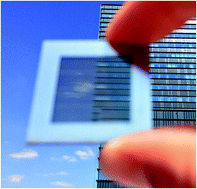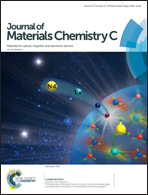Translucent, color-neutral and efficient perovskite thin film solar modules†
Abstract
Thin film perovskite photovoltaic devices combine high power conversion efficiencies with low weight, large area, high speed production capabilities and high versatility in form factor. With this paper, an additional feature is added to the device property portfolio: optical transparency. Results on translucent perovskite modules with selectively tuned levels of transparency are reported by applying the industrially established fabrication process of partial area ablation to high efficiency opaque devices. After process completion, the final devices consist of opaque areas that absorb the light, and transparent areas that permit neutral light transmission. We compare the effectiveness of using two active area removal techniques: mechanical scribing and laser ablation, and determine the factors that limit the maximum transparency and power conversion efficiency. Moreover, we show how the choice of the ablation method and design of the active area removal pattern affect and limit the maximum light utilization efficiency ratio that can be achieved with this fabrication process. The resulting 4 cm2 translucent modules cover a range of visible light transparency from 7 to 37% with a corresponding power conversion efficiency of 5 to 13%.



 Please wait while we load your content...
Please wait while we load your content...